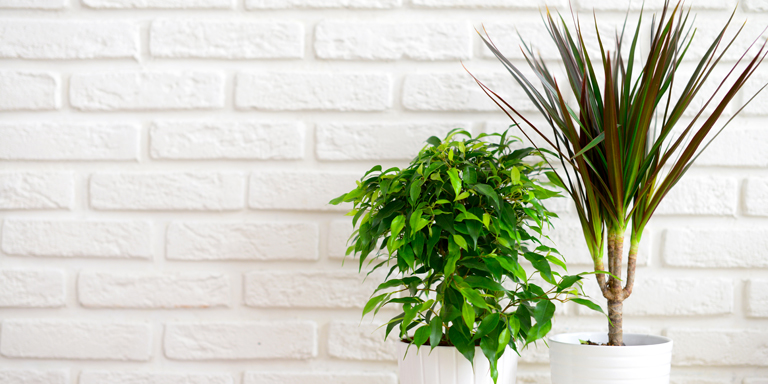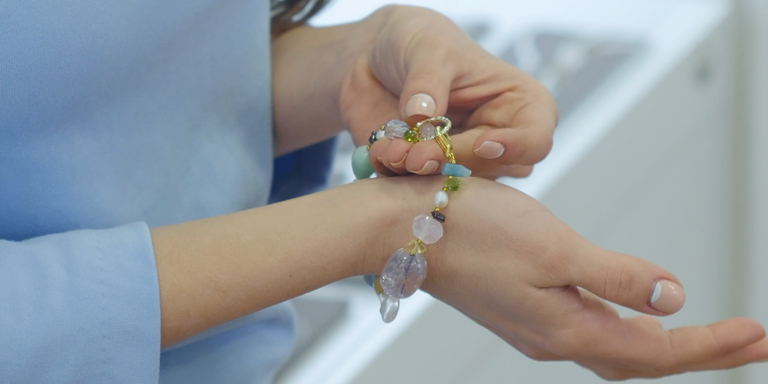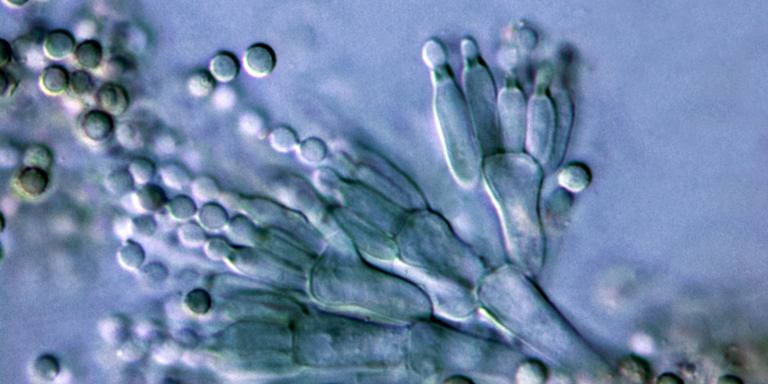Indoor plants
Indoor plants make us feel better. However, there are also some that are known to trigger an allergy.

Table of contents:
They release oxygen, filter out harmful substances and keep the air pleasantly humid. Some species, however, such as the popular weeping fig, Ficus benjamina, can trigger an allergy – with cold symptoms, red eyes, a cough or asthma. Contact eczema may also occur.
Triggers
The substances responsible for the reaction, the allergens, are found in the juice of the plant. When they reach the surface of the leaves, they either come into direct contact with our skin or combine with dust particles and thus enter the air we breathe.
The following indoor plants are known to trigger an allergy:
- weeping fig, Ficus benjamina (occasionally in a crossreaction with latex, respiratory tract reaction)
- waxplant, Hoya carnosa (respiratory tract reaction)
- ferns (respiratory tract reaction)
- peace lily Spathiphyllum wallisii (runny nose, respiratory tract reaction, contact allergy)
- philodendron species Ph. bipennifolium and Ph. Scandens (respiratory tract reaction, contact allergy)
- dwarf umbrella tree Strahlenaralie actinophylla / arbolicola (respiratory tract reaction, contact allergy)
- aloe yucca / Spanish bayonet / dagger plant Jucca aloifolia (contact allergy)
- African violet Saintpaulia ionantha (contact allergy)
- poinsettia Euphorbia pulcherrima (contact allergy)
- dumb cane Dieffenbachia (contact allergy)
- dragon tree Dracaena (respiratory tract reaction, contact allergy)
- poison / German primrose Primula obconica (contact allergy)
- orchids Orchidaceae (contact allergy)
Symptoms
Typical symptoms are cold symptoms, red eyes, a cough or asthma. Some plants can also cause contact eczema on the hands, face, neck or urticaria (hives).
Diagnosis
It is often the case that indoor plants are initially overlooked as the cause of the allergy. If the above symptoms occur, a doctor or allergy specialist should be consulted for further investigation. Only a few allergies can be confirmed with a blood test. A skin test with a leaf or flower is usually more useful.
Treatment
Treatment consists of avoiding any future contact with the allergen. This means that any plants triggering the allergy should be removed from indoors. This usually results in rapid improvement in the allergy symptoms. However, the plant proteins triggering the allergic reaction can still remain for a long time in dust particles. This is why the symptoms may still occur even after the plant is removed. Medication such as antihistamines and cortisone help alleviate the symptoms.
Tips and tricks
The following plants are good alternatives, as they usually do not trigger an allergy:
- anthurium (flamingo flower)
- papyrus
- philodendron
- spider plant
- bromelia
- sansevieria (motherin-law’s tongue)
- aloe
- zamioculcas (ZZ plant)
- in the garden area: hortensia, rhododendron, azalea, magnolia, forsythia and guelder rose
Caution: Indoor plants can also be a source of house dust mites and mould and can therefore be a problem for people with the respective allergy. Sufferers should avoid putting any plants in their bedroom.
Editors: aha! Swiss Allergy Centre in co-operation with the Scientific Advisory Board.




